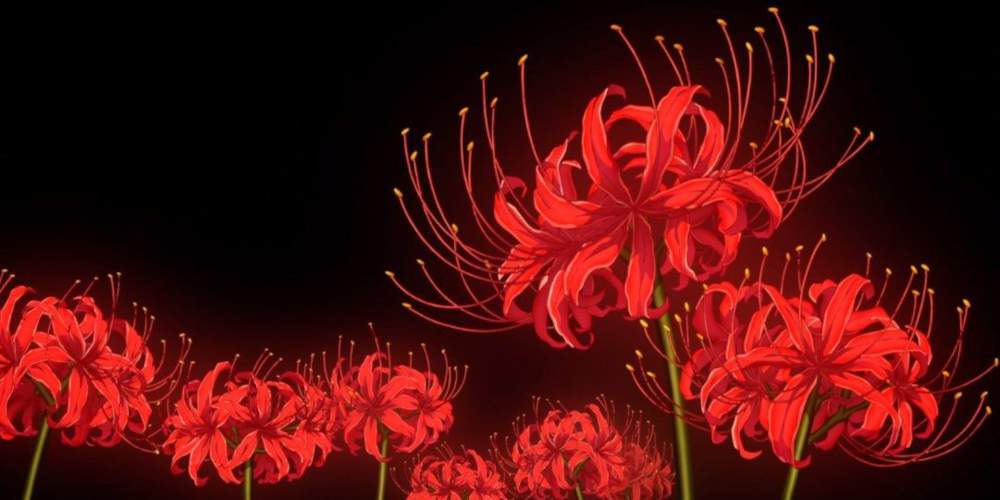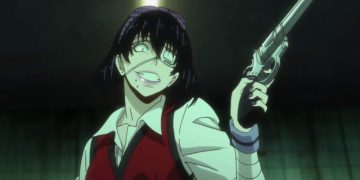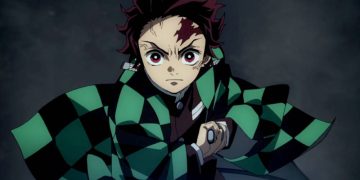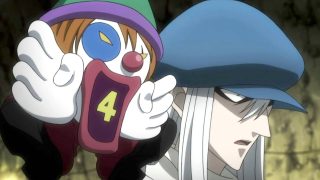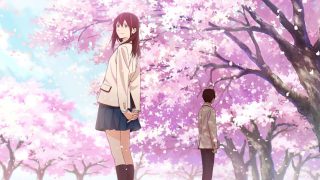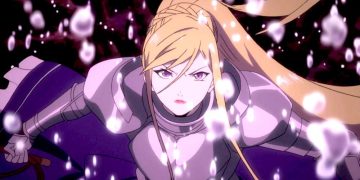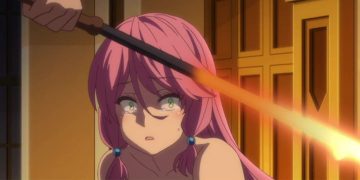The red spider lily (commonly called higanbana in Japanese) will sometimes appear in anime to impart ominous meaning to a scene. But why the red spider lily instead of, say, a black rose? Surely that would be more disturbing and evidently bad?
Well, manga and anime use symbolism just like any other narrative medium, and these symbols are usually rooted in traditions, legends, folklore, myths, etc. That's the case here, as there's a history that links the red spider lily with death, tragedy, and hell.
The red spider lily (Lycoris radiata) is a flowering plant that originates from Asia—most notably China and Korea, then later introduced to Japan and other countries beyond Asia.
In some traditions and religions, it was planted on graves as tributes to the departed. And since it was so often found in cemeteries, it eventually formed a reputation as the "flower of Hell" or "flower of death."
Not just death, either. The red spider lily can also be used to foreshadow farewells and goodbyes, likely rooted in the idea of two lovers who would never get to see each other again.
And now, the red spider lily is a significant symbol in anime that's used to hint at some kind of heartbreaking tragedy up ahead. Here are some of the best examples of red spider lilies in anime.
7. Ken Kaneki Embraces His Ghoul Side (Tokyo Ghoul)
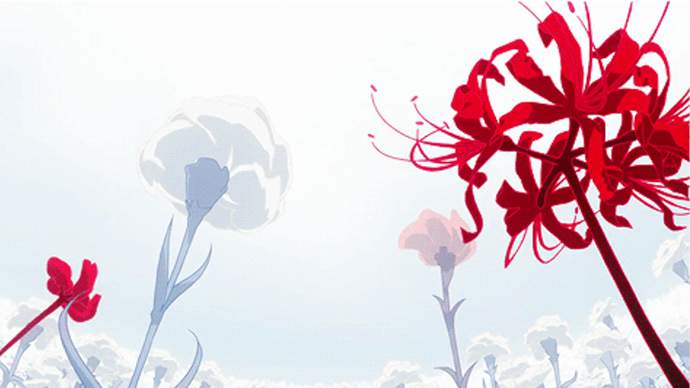
Remember when Yamori captured and tortured Ken, pushing him to the limits of his sanity? That's when Rize appeared in his mind and talked to him about power—about accepting his Ghoul side.
In this case, the red spider lily doesn't symbolize the loss of someone's life but rather the loss of kindness within Ken, who then resorted to bloodthirst and violence to defeat his enemy.
The white flowers (which symbolize kindness and love) around them turn into red spider lilies, one after another.
6. Death of Dororo's Mother (Dororo)
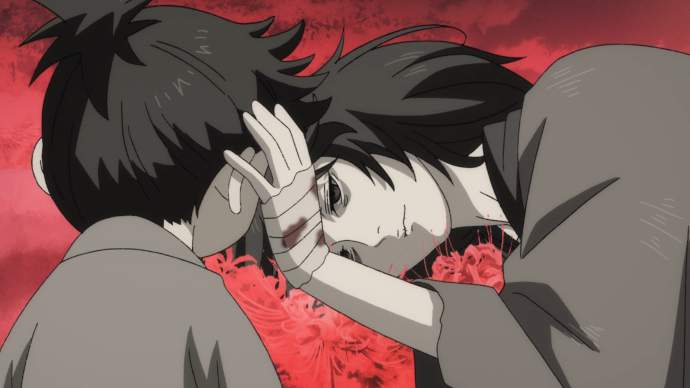
In episode 9 of Mappa's Dororo, Dororo states that he (she) doesn't like red spider lilies. We learn that Dororo's loving mother died in a field of red spider lilies, making it her literal grave.
It was a totally heartbreaking scene as she left Dororo behind at a young age, after all the hardships they both endured.
Before this, there was a flashback scene that showed those flowers, with Dororo asking why the flowers were the same color as blood. Hibukuro (Dororo's father) says that they must have absorbed the blood of the dead, given that they lived during a war-stricken era.
5. Ending Credits (Demon Slayer)
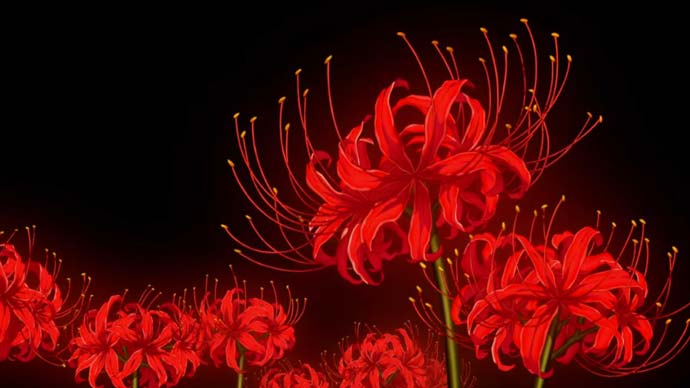
You won't find any red spider lilies in Demon Slayer except in its end credits scene. Given that it's an anime series full of blood and death, the flower of death is a fitting one for the show.
But if you got attached to the characters and then accidentally saw the end credits scene—because pretty much nobody watches them and skips ahead to the next episode—you'd probably wonder which of your favorite characters might be next to die.
What's more interesting is that Demon Slayer actually features a fictional spider lily, except it's blue instead of red (and has medicinal properties).
Demon Slayer isn't the only anime series to feature the flower of death in its end credit scenes, with Inuyasha being another iconic example.
4. Dimension Slash: Equinox (Black Clover)
When Yami Sukehiro uses his Dimension Slash: Equinox ability, we see a red spider lily on the screen. It doesn't actually signify or foreshadow any major character's death, though, as it's only a wordplay.
The red spider lily is sometimes called the equinox flower because it usually blooms around the autumnal equinox. So, adding it to this scene just adds an additional layer to an otherwise badass technique.
3. The Flower and the Butterfly (Children Who Chase Lost Voices)
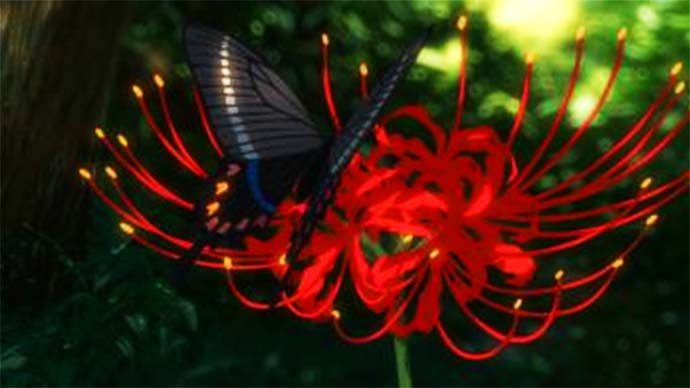
In Makoto Shinkai's Children Who Chase Lost Voices anime movie, the red spider lily was featured with a butterfly flying from it. This imagery was sometimes meant to represent the soul leaving the body.
But its appearance in the film isn't a full-on foreshadowing, despite the death of Shun (as it happened after Shun died). It seems more like an element used to solidify its themes about death and resurrection, the Agartha, and the heartbreaking farewell at the end of the story.
Also, the moment was part of the classroom scene that features a lesson all about the underworld-slash-afterlife.
2. Death of Kaneki's Mother (Tokyo Ghoul)
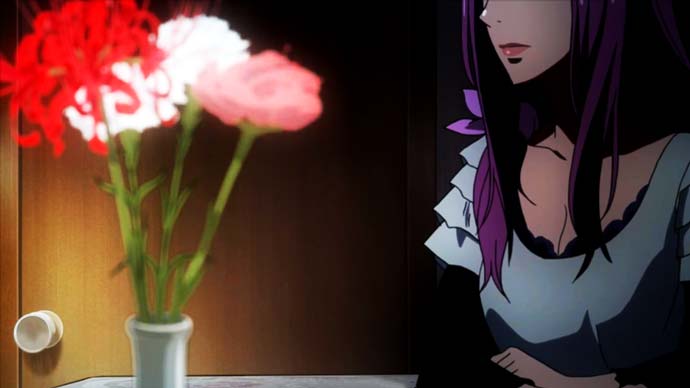
Before Ken Kaneki embraced his Ghoul side, there was a scene when the famous flower of death appeared, and it actually foreshadowed the death of none other than his mother.
In his past life, which was narrated in a flashback during Rize's presence in his mind, his mother was described as a kind and loving person, symbolized by the white flowers on the vase above the table.
Two of those flowers then turned into a red spider lily as the story nears its end, which pointed ahead to the death of his mother.
1. Hell Girl
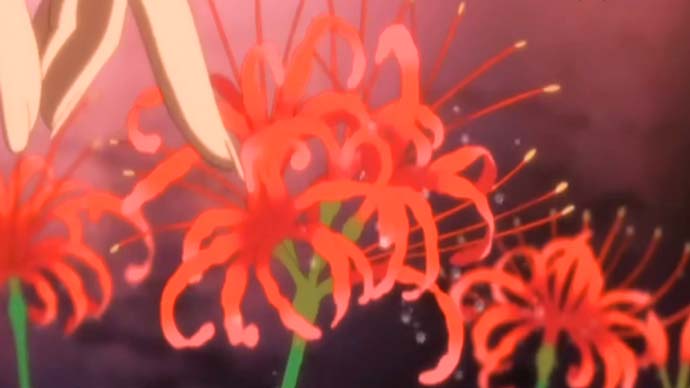
In this anime series that's full of death and centered on Hell and the spirits within, the presence of the red spider lily may not be so unusual.
However, the flowers, the river, and the boat collectively represent the "Other Shore"—a concept similar to that of the River Styx and the afterlife in Greek mythology.
Plus, every appearance of the flowers of death lends further to the overall darkness and disturbing nature of this horror anime series.
